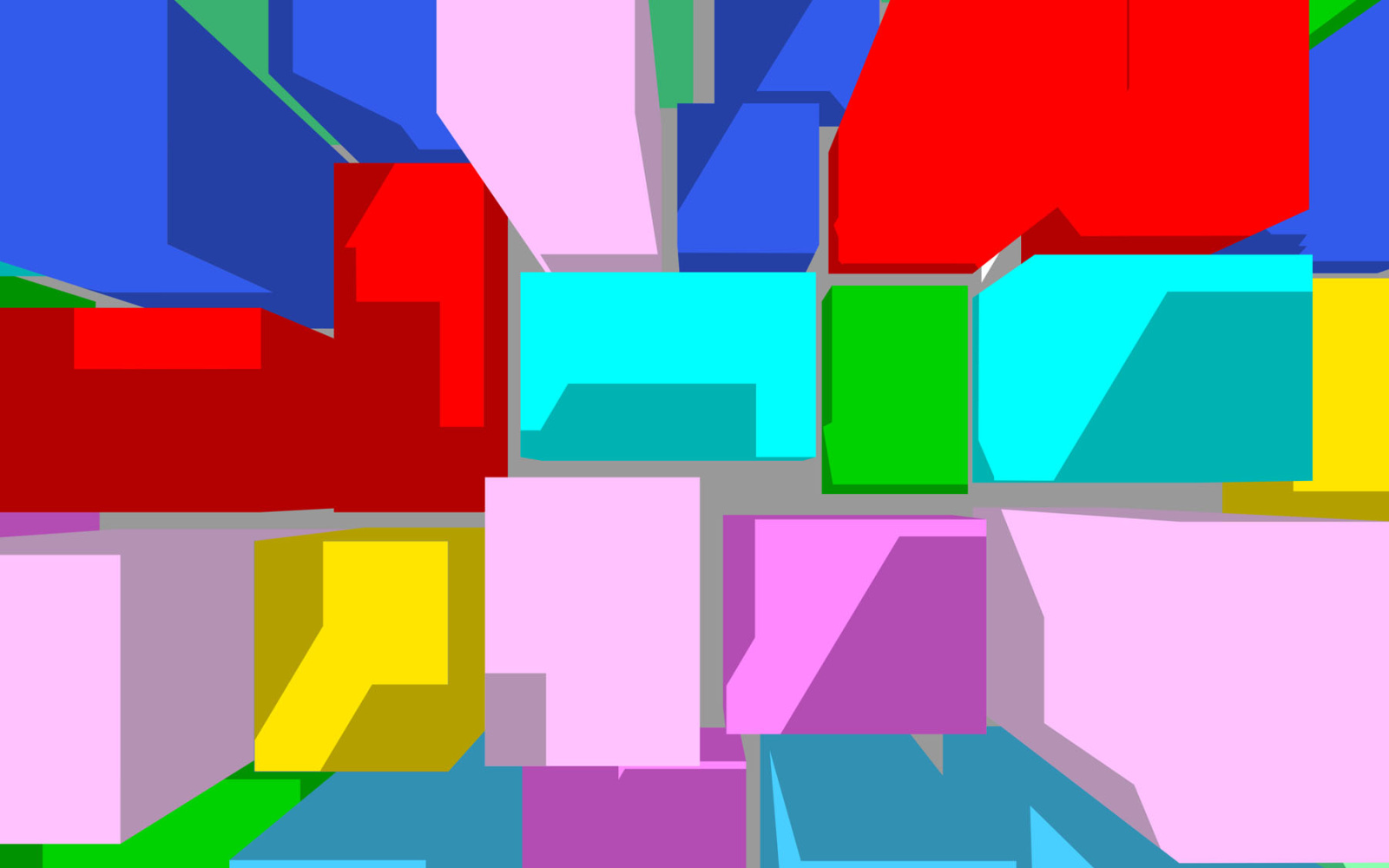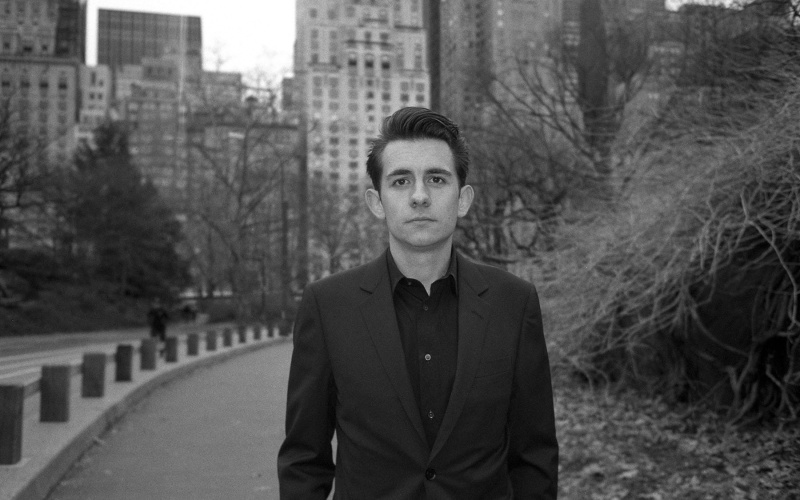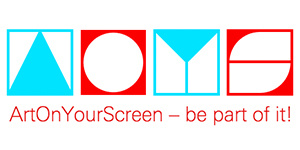Rafaël Rozendaal: Neo Geo City
Browser programs may be compared with the stage: A characterization that does full justice to the works of Rafaël Rozendaal, born in 1980, and to which the artist himself often makes reference. One group of works by the Dutch/Brazilian artists consists of websites, each of which have their own associative domain names, and display a single work only. Aside from the link to the artist‘s homepage, there is no content other than the work.
For AOYS, one flies with Rozendaal’s help over the huge colorful city called »Neo Geo City« (2014), comprising different large cubes. These extremely abstract »buildings« are variously colored. With contemporary means they link up to the pictorial »Neo Geo« trend or the 1980s, as typified, for example, in Peter Halley‘s paintings. The visitor can take hold of the cubes with the mouse, and thereby maneuver them in any direction. By clicking on one, the plan becomes black and all that can be seen are the wire frame models. The city extends endlessly in any direction selected.
With this work, Rafaël Rozendaal belongs to one of the oldest net art traditions, namely, browser art. But the possibilities are far greater today than those used in the mid-1990s, when protagonists such as Jodi (Joan Heemskerk, Dirk Paesmans) or Alexej Shulgin appeared on the scene. And yet Rozendaal’s work voices the spirit of limitation and concentration of that period. Present-day programming technology, which is also used in Rozendaal’s work, makes it possible to mainly do without static pictures, such as for control elements. Instead, the browser calculates these and presents them in its window. Even movements can be programmed. Jpegs or other files no longer need to be reloaded. HTML 5 and Javascript allow for an extraordinary dynamization of the surface. And yet the representation differs from device to device. Rozendaal is positive about this limitation, since each device offers a unique experience. Everything is movement, changeable, inconsistent. The user is also present in the pictorial space. Because computers are also capable of generating random numbers, it is possible to change the works of art again for all users.
| Author: | Matthias Kampann |


